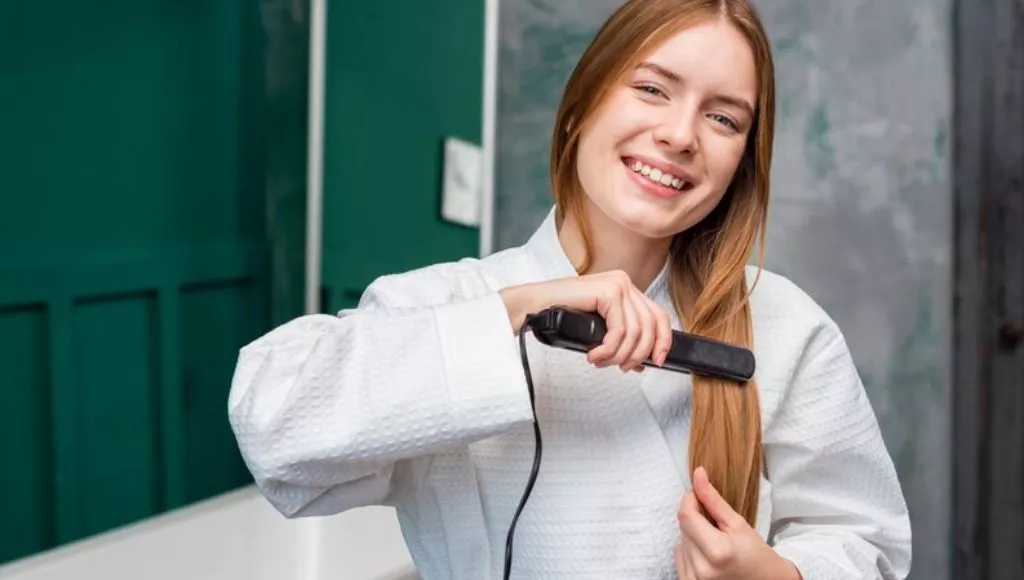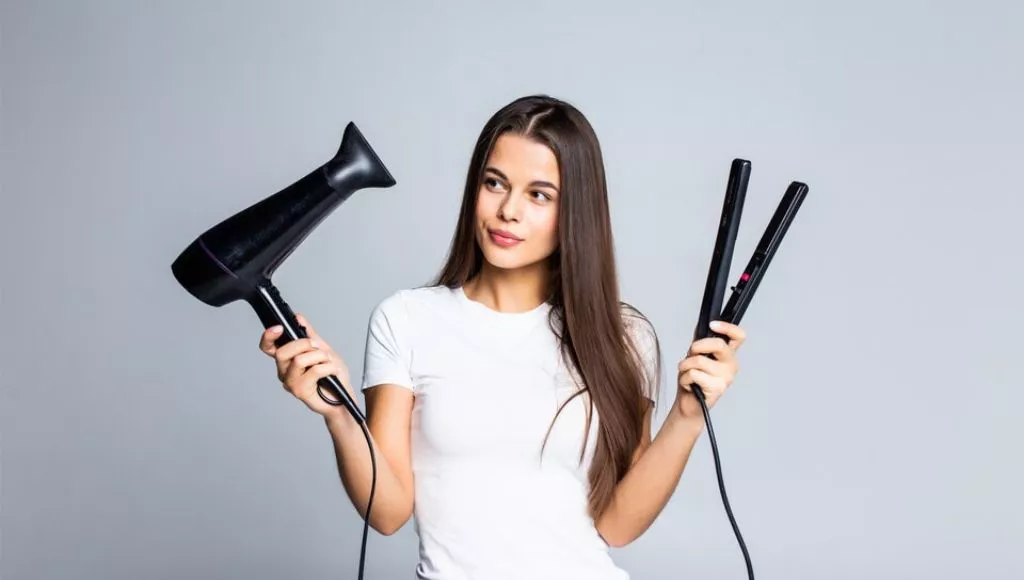Heating tools are devices designed to apply heat for styling and grooming purposes. Examples include hair dryers, straighteners, curling irons, and hot rollers. While these tools offer versatility and convenience, excessive use can lead to negative effects. However, the positive effects must be noticed too.
Positive Effects Of Heating Tools On Hair
- Drying and Styling- Hair dryers are essential for quickly drying wet hair, saving time and preventing dampness. The controlled airflow not only allows users to shape and style their hair simultaneously but also provides a finishing and polishing look.

- Long-Lasting Styles- Heat styling tools like flat horns and curling irons can create styles that can last longer, even for a day. This is because the heat helps set the hair in the desired shape, providing a structured appearance.
- Versatility- Heating tools offer a wide range of styling options, allowing individuals to experiment with different looks. From straightening to curling, these tools enable everyone to express their creativity and adapt their hairstyles to various occasions.
- Enhanced Shine- Heat can help smooth the hair cuticle, reducing frizz and enhancing the natural shine. This can result in a sleek and polished appearance contributing to the vibrant look.
- Volume and Body- Some tools are ideal for adding volume to the hair and rollers are an excellent choice.
CHECK OUT:- From Messy Buns to Perfect Pouts: Elevate Your Glamorous Curly Hairstyle Game
Negative Effects Of Heating Tools On Hair
The negative effects of heating tools on hair include-
1. Damage to hair cuticle- Excessive heat from styling tools opens the hair cuticle, leaving the inner layers vulnerable. This damage disrupts the smooth surface of the cuticle, resulting in dry, frizzy, and brittle hair. When the cuticle is compromised, the air’s ability to retain moisture is reduced exacerbating issues related to dryness and texture.
2. Loss of moisture- No part can survive without water and the same goes for hair. When heating products come in contact with the hair, they strip away the natural oils. The heat causes the water molecules in the hair to evaporate, leaving it dry and more susceptible to breakage, split ends, and a lackluster appearance. The loss of moisture also affects the overall impact of hair well-being.
3. Weakened hair structure- Prolonged exposure to high heat weakens the presence of Keratin. Not only does the hair lose its elasticity but also makes it prone to damage or breakage. Weakened hair structures can lead to a diminished ability to withstand external stressors, leaving the hair more fragile and resilient.
4. Color fading- Heat can accelerate the fading of the hair color, especially in individuals with dyed or chemically treated hair. The high temperatures can cause the color molecules to break down more rapidly resulting in a shorter life span for vibrant hair.
5. Scalp issues- Excessive heat can have adverse effects on the scalp, leading to dryness, irritation, and potential scalp conditions such as dandruff. The heat can strip the scalp of its natural oils, disrupting its balance and causing discomfort.
CHECK OUT:- Dry Scalp Treatment-Top Ways To Regrow Healthy Hair
Tips For Minimizing Damage Caused By Heating Tools
- Use Hair Protectants- Though heat could damage the hair, it is no reason to skip some amazing styling tips. Heat protectants contain ingredients that form a protective barrier on the hair, shielding it from the direct impact of heat. Look for products with silicones and polymers, reducing friction and heat damage.
- Adjust Heat Settings- Different hair types require different levels of heat. Fine or thin hair may not need as much heat as thick or coarse hair. Using the lowest effective heat setting ensures that you are not subjecting your hair to unnecessarily high temperatures, minimizing the damage over time.
- Limit Frequency- Avoid using heat tools daily. Giving your hair regular heat breaks allows it to recover and retain its natural oil balance. This means going for natural styles instead of updos and braids.
- Conditioning Treatments- Incorporate deep conditioning techniques while you practice your hair care routine. These treatments replenish moisture, nourish the hair, and strengthen the structure.
Conclusion
While enjoying the positive effects of heating tools, it’s crucial to balance their use with proper care to prevent potential damage to the hair. Utilizing heat protectants, adjusting heat settings, and a good hair routine can help maintain healthy and stylish hair.
By following the benefits of heating tools while minimizing the risk of damage, your hair vibrancy stays intact.

